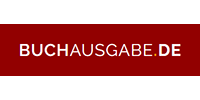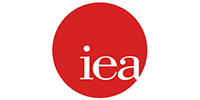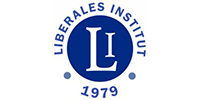Gold or Bitcoin as Alternatives to Fiat Money
Prepared for the European Center of Austrian Economics Foundation’s 2023 Gottfried von Haberler Conference, “Taking Money out of Politics: A Case for Private Money?,” Vaduz, Liechtenstein, 12 May 2023.
Much of the argument here is spelled out in more detail in my recently published book Better Money: Gold, Fiat, or Bitcoin? (Cambridge University Press, 2023).
Abstract
Fiat monies are performing poorly. Price inflation has risen to double digits, and erratic monetary policies have undermined banking system stability. It is well understood that to control growth in the price level we need to control growth in the quantity of money. But how? Giving central bankers good advice isn’t working. We need effective institutional constraints. One approach is to persuade legislatures to impose constraints on fiat-money expansion by central banks. Here I consider an alternative approach: an alternative monetary standard that better disciplines the issuers of money. Hayek’s argument (Denationalization of Money 1976) for consumer choice among monies has gained new relevance from novel entrants into the market for monetary standards. Bitcoin emerged in 2009. Digital claims to gold are now transferable at low cost via blockchain.
Which would be better as a monetary standard, Bitcoin or gold?
Which of the two would be better, Bitcoin or gold? Historical experience under the classical gold standard shows slow average growth in the supply of monetary gold, but also appropriate variation in the growth rate of the monetary gold stock in response to the current purchasing power of gold. These supply variations acted to stabilize the purchasing power of gold, keeping it close to a flat long-run trend. Gold has a nearly flat long-run supply curve. Bitcoin, by contrast, has a vertical supply curve that makes its purchasing power much more volatile in the face of demand variations. We can expect that should fiat inflations reach the level that prompts spontaneous household switching to better money, a gold standard is more likely than a Bitcoin standard to emerge from the market. In any case, laws and regulations should not prevent the market discovery and spread of better ways to serve money users. That discovery process calls for a level playing field and an open playing field.
Fiat monies are performing poorly. The euro is exhibiting the highest inflation rates in its history, the HICP reaching 10.6% in October 2022, despite a constitution specifying price stability as the European Central Bank’s only goal. The US dollar CPI inflation rate reached 9% in June 2022, its highest value in 40 years. The British pound CPI inflation rate reached 10.5% in December 2022, also its highest value in 40 years. (All rates are year-over-year percentage changes in monthly consumer price indices.1)
Are these just transitory blips, or will the current high rates of inflation persist as long as double-digit inflation did in the 1970s and early 1980s? Persistent 9-10% inflation imposes a serious tax on holders of money, and in more subtle ways disrupts an economy by making the price system noisier. In developing and middle-income countries, current inflation rates are even worse. Inflation rates are running above 30% in more than a dozen countries, and have recently reached triple digits in five countries. People living in lower-income economies are especially burdened by inflation because they generally speaking hold more cash relative to other wealth and don’t have inflation hedges as readily available as do people in higher-income countries.
What can a society do about high inflation?
How can we control growth in the price level? Today it is generally understood, thanks to generations of economists (Austrian and otherwise) who have studied the matter, that in a fiat money economy we need to control growth in the quantity of money. When a central bank adds more money to the economy, other things equal, it dilutes the purchasing power of existing units of money. This is not to say that other events—shocks to velocity or real income—can’t also affect the price level. But those causes tend to be relatively small and temporary, whereas growth in the quantity of money can be very large and be very persistent when the a government wants it to be. We need to limit growth in the quantity of fiat money if we want to keep inflation in low single digits.
How do we control growth in the quantity of money? Many economists have taken the approach “Let’s persuade central bankers to pay more attention to keeping inflation low,” as though central bankers are not aware of inflation data, or “Let’s advise central bankers to put more weight on keeping inflation low,” as though central bankers do not already have preferences. I’m not against giving unsolicited good advice to central bankers, but I don’t think that’s sufficient. I think we’ve learned that central bankers have preferences in terms of the immediate-run tradeoff between inflation and unemployment. They are pressured by fiscal authorities to accommodate spending. They value their independence, and so will do what the fiscal authorities want. (Irony intended.) Just as we economists treat firms and consumers, we can presume that a central bank is already optimizing given all of the influences on it. Accordingly, we on the outside need to do more than give advice. We need to impose institutional constraints. We need to limit central banks’ discretion to pursue goals other than stability in the purchasing power of money (or in nominal income, which may better balance medium-run stability in purchasing power with stability in real income).
How can we get effective institutional constraints? Two approaches to the question developed during and since the episodes of double-digit inflation in developed economies in 1970s and 1980s. The first and more common approach considers various “rules” for the creation of fiat money, prescriptions to be imposed on central banks. The classic article Kydland and Prescott (1977) provides a leading example. It discusses how enforceable rules, by contrast to discretion, provide precommitments that enable central banks to achieve a low inflation goal more effectively. This is advice directed to policymakers. When the central bank can’t effectively bind itself (because it can always modify any self-imposed rule), policymakers external to central banks, perhaps legislatures, are to impose enforceable constraints on central banks.
Here I take the second approach, which considers how competition among monetary standards can discipline the issuers of money. The classic work in this approach is F. A. Hayek’s The Denationalisation of Money (1976), published a year before the Kydland and Prescott article.
Hayek reformulated the question of why inflation had gotten so high by asking: “Why has the quality of money been allowed to deteriorate so badly?” He noted that in other goods and services what we rely on to provide us with quality goods is competition among producers. Any dissatisfied consumer can stop buying a low-quality product and switch to a higher-quality product. He concluded that we should similarly let people choose what they consider the best among the world’s monies. The earliest version of his recommendation was: Leave people free to use any of the existing fiat monies. Governments should not maintain barriers against people opening bank accounts in foreign currency or even using foreign banknotes. The later “denationalization” version added a further proposal: Let private enterprise compete for the favor of money-users. He predicted that issuing firms would promise to provide stable purchasing power, and if some failed to do so, the public would abandon them in favor of the issuers who were doing a better job.
Competition from other monies would compel a nation’s central bank to lower the inflation rate in its money, Hayek argued, because it would lose its customers if it didn’t match the low inflation rates of the competing suppliers.
Hayek’s imaginative analysis has acquired renewed relevance today in light of real-world new entrants into the market for monetary standards. Bitcoin emerged in 2009. Starting from zero, albeit through ups and down, it has remarkably achieved a market capitalization (total value of units outstanding) that recently stood at over $500 billion (about 20 million coins with a market value above $25,000 each).
The blockchain “distributed ledger” technology introduced by Bitcoin is also being applied to make units of gold transferable in a more convenient way. Tether Gold, consisting of Ethereum tokens backed by ounce for ounce by gold in warehouse vaults, was introduced in 2014. It April 2023 it had $496 million outstanding. The leader in the “digital gold token” segment is Pax Gold, which has over half a billion dollars’ worth outstanding ($549 million in April 2023). These tokens are still small in market capitalization compared to Bitcoin, but are growing. They provide a convenient way of holding transaction balances in gold, and paying them to anybody who can accept an Ether token. There are other new firms that enable gold transfers in the form of non-crypto transferable warehouse claims, such as Glint (which enables online transfers) and Coro (phone app transfers).
There are legal obstacles and tax rules in most countries that discriminate against the holding and use of Bitcoin and gold as transaction media. There are certainly obstacles to the creation of brick-and-mortar banks that are based on Bitcoin or digital gold. On a level playing field, against high-inflation fiat monies, both Bitcoin and digital gold are possible competitors as monetary standards.
Which of the two would be better, Bitcoin or gold? We can look to the historical experience with the classical gold standard and see that it produced a slow average growth in the supply of monetary gold. Hugh Rockoff’s (1984) data indicate that the stock of gold grew at 2.9% per year on average over the century preceding the First World War. It can be observed in the data that the growth rate of the monetary gold stock varied from decade to decade, roughly in the range of 1% per year to 5% per year. What is less obvious, but no less real, is that it varied in response to the current purchasing power of gold. Such induced supply variations acted to stabilize the purchasing power of gold, returning it to its flat long-run trend.
A thought experiment will illustrate. Suppose that a new country joins the gold standard, making the demand to hold monetary gold grow faster than supply, or alternatively that monetary gold demand grows with productivity improvements that increase in the growth rate of real output. In either case the purchasing power of an ounce of gold will then begin to rise. The rising purchasing power of gold dampens non-monetary (industrial and jewelry) quantity demanded, and stimulates an additional quantity supplied from gold mines. In the short run it pays to convert jewelry and industrial gold stocks into coin (the monetary stock supply curve slopes upward because the non-monetary stock demand curve slopes downward). In the market for gold flows, it pays to use less for industrial purposes (the flow demand curve slopes downward), and it pays to dig a little deeper into each gold mine (the flow supply curve slopes upward). An increased flow of mined gold to the mint accumulates, shifting the stock supply curve to the right over time. It pays to prospect a little more, leading in the longer run to the opening of new mines, so that the long-run stock supply curve is very elastic. The classical gold standard thus responded both to idiosyncratic demand shocks, like countries switching from silver to gold standards, and to secular growth in money demand, in a way that effectively stabilized the purchasing power of gold. When money demand grew, the gold standard eventually satisfied that demand by increasing the quantity, rather than putting the whole burden of adjustment on the price level.
Monetary gold having a flat or nearly flat long-run stock supply curve means that over long periods – and this is evident in the historical data – the purchasing power of gold keeps returning to a stable trend, a very flat trend. The purchasing power of the US dollar, defined as an unchanging mass of gold, was nearly the same, less than one percent different, between the US re-joining the gold standard in 1879 (the CPI was 9.67) and the classical international gold standard being abandoned in 1914 (the CPI was 9.60). Likewise, the purchasing power of the UK pound was almost exactly the same on the eve of the First World War (1.303 in 1913) as it had on the eve of the Napoleonic Wars (1.304 in 1796).2
A gold standard is subject to supply shocks, unexpected discoveries of sources of gold, the largest of which was the California gold discovery of 1848 that led to the gold rush of 1849. But historically such shocks were relatively small, and large future supply shocks are unlikely given that the entire globe has now been explored. Judging by the UK Retail price index, the impact of the California discovery created an inflation in the world price level that ran at an annual compound rate of 1.46% for about 11 years. (The UK RPI turned up only after 1851, reaching a local peak 17% higher in 1862, and thereafter declining.)3 Over the longer run, as already noted, the purchasing power of gold was very flat.
We do not have historical data for a Bitcoin standard, but we can imagine a world in which Bitcoin is the predominant medium of exchange, so people hold Bitcoin as a transaction medium. That would make demand to hold Bitcoin more stable than it is now, when it is held almost entirely as a speculative asset. But purchasing power would not be constant in response to remaining variations in demand, because the quantity of Bitcoin is absolutely inelastic. It grows at a programmed rate without regard to the value of Bitcoin, without regard to its price in dollars or purchasing power over goods and services. The impact of an increase or decrease in demand falls entire on the price of Bitcoin, not at all on its quantity. This feature makes the purchasing power of one Bitcoin quite volatile. There’s no reason for reversion to a steady secular path, the way there is under a gold standard. Purchasing power volatility is built into the design of the Bitcoin system.
Bitcoin has been successful at attracting investors, but not so successful at attracting people who want to use it as a medium of exchange, because of its volatile purchasing power.
The data show that Bitcoin’s daily percent change in dollar price is a multiple of that for gold or the euro. Bitcoin’s 60-day volatility is likewise a multiple. Contrary to predictions by some Bitcoin promoters, the volatility of Bitcoin has not diminished over its lifetime. Demand swings remain large, and the supply responses to them remains zero. Demand shifts are absorbed only by proportional changes in the price and not by changes in the quantity.
Where does that leave us? Bitcoin standards and gold standards are not going to establish themselves from the bottom up without a breakdown in fiat standards. People are going to continue to use fiat standards as long as they work tolerably well. Recent fiat readings of 10% inflation under fiat standards are indications of not working tolerably well. If we look at the experiences of countries with acutely high inflation, we find that dollarization grows with the height of inflation. There is no exact numerical threshold applicable to every country, but roughly speaking it appears that a majority of the populace switches to using the US dollar, or the euro, when local inflation reaches about 20 percent annually and shows no sign of returning to single digits. You know that a currency is in trouble when the inflation rate begins to be reported in monthly rather than annualized figures.
If inflation rates in the dollar and the euro rise above 20 percent, we will see people in countries with even weaker currency switching not to dollars or euros, but toward alternative media of exchange like gold and Bitcoin. We have already seen this in Venezuela as a result of triple-digit inflation combined with restrictions against US dollar use. Venezuelans have turned to earning and spending Bitcoin, especially in the cities, and to using gold as a medium of payment in the gold-mining regions. News articles have reported on people using flakes of gold to buy groceries, with shop prices posted in grams of gold.
So long as fiat inflation rates remain below that range, established fiat standards have a network advantage. People want to paid in what they can turn around and spend today. There aren’t many goods and services available for purchase in gold or in Bitcoin today, outside of countries with triple-digit inflation. To get a spontaneous global switch to a gold or Bitcoin standard I expect that we will have to wait for chronically high inflation in all of the major fiat currencies. Of course, nobody hopes for such an event. Still, it’s good to have alternatives on standby. And it’s good to allow people as much access to alternatives as they want.
If we see a market switch away from fiat monies, would be to gold or to bitcoin?
I’ve already noted that gold’s purchasing power is less volatile. Gold also has a larger installed base of users. World Gold Council estimates indicate that there is close to $13 trillion dollars of gold held above ground (at a price of $2000 per troy ounce). Nearly half (46%) of that gold is in jewelry, but the dividing line between holding 22K jewelry and holding bullion is a thin one in countries like India. The part of the gold stock held by the public and by central banks in explicitly monetary form, that is, in bullion and coins, is about $4.9 trillion. That’s about 9 times the market value of Bitcoin, which is currently about $0.54 trillion.
Bitcoin does have one important advantage, however. Because it is intangible, and can be transferred peer to peer without custodians, Bitcoin payments are harder for governments to restrict or shut down than a system of payments settled by transfers between brick-and-mortar gold-vaulting institutions. We will have to see which advantage will prove more popular. The more restrictive governments are toward gold, the more that favors Bitcoin. Governments can, however, drive Bitcoin underground by outlawing its open use. The results can be seen in China: not zero use or mining of Bitcoin, but much less, and only underground, blocking its use as a medium of exchange from reaching even the extent possible given its volatility.
There are additional alternatives. There could be a future money somewhat like Hayek imagined, pledging a stable purchasing power. Nowadays it might take the form of a “flatcoin”: a cryptocurrency pegged to a price index or quantity-governed to return to a constant purchasing power. Projects are underway. It’s not clear that a continuously pegged stablecoin would be viable: It would have to match its inflation-indexed liabilities with inflation-indexed assets, but inflation-indexed bonds often have negative yields. The second alternative, a non-pegged flatcoin, is represented by a project I’m consulting on, called Prasaga. The idea is to program the coin to have a demand-responsive supply, like the classical gold standard had, only with purchasing power mean-reversion in a matter of months rather than years.
The norm of consumer sovereignty calls for better monies from the point of view of money users. We might presume that money users want more stable purchasing power, but the market discovery process needs to operate to show us what features money users actually want. Governments need to allow free entry (on a caveat emptor basis) of monetary projects that involve alternative standards in order to give the entrepreneurial discovery process full scope. Public policies should not inhibit the discovery of better ways to serve money users. That discovery process calls for a level playing field and an open playing field.
As long as fiat money persists because of its network advantage, those of us who want better money will need to continue to work on ways to impose rules to appropriately limit the expansion of central bank liabilities. To use the language of constitutional political economy, we will need to constitutionally constrain government issue of money.
Lawrence H. White, George Mason University
lwhite11@gmu.edu
1 For the euro, HICP inflation rate – Overall index, https://www.ecb.europa.eu/stats/macroeconomic_and_sectoral/hicp/html/index.en.html; for the US dollar,
Consumer Price Index for All Urban Consumers (CPIAUCSL), https://fred.stlouisfed.org/series/CPIAUCSL; for the UK, Consumer Prices Index, https://www.ons.gov.uk/economy/inflationandpriceindices/bulletins/consumerpriceinflation/january2023.
2 Data sources: US CPI https://www.measuringworth.com/datasets/uscpi/; UK RPI https://www.measuringworth.com/datasets/ukearncpi/.
3 Ibid.
References
Hayek, F. A. 1976. The Denationalisation of Money. London: Institute of Economic Affairs.
Kydland, Finn E., and Edward C. Prescott. 1977. “Rules Rather than Discretion: The Inconsistency of Optimal Plans,” Journal of Political Economy 85 (June): 473-91.
Rockoff, Hugh. 1984. “Some Evidence on the Real Price of Gold, Its Costs of Production, and Commodity Prices.” In Michael D. Bordo and Anna J. Schwartz, eds., A Retrospective on the Classical Gold Standard, 1821-1931, pp. 613-44. Chicago: University of Chicago Press.





























